In the world of indoor gardening, the search for plants that thrive in low-light spaces is a recurring challenge.
However, the fascinating variety of succulents and cacti offer us different beautiful and sturdy plants for those who wish to fill their spaces with a touch of nature even in corners with limited light.
In this article, we will show you a small selection of succulents and cacti that adapt to dimly lit indoor environments.
1. Haworthia

Haworthia is a genus of succulent plants native to South Africa, known for their thick, fleshy leaves arranged in compact rosettes.
These small plants require little care; just make sure they receive a few hours of sunlight.
Their tubular flowers, in white, pink, or greenish hues, emerge on slender stalks above the leaf rosette.
With easy propagation from cuttings or seedlings, Haworthias offer an attractive and low-maintenance option for succulent enthusiasts.
2. Gasteria
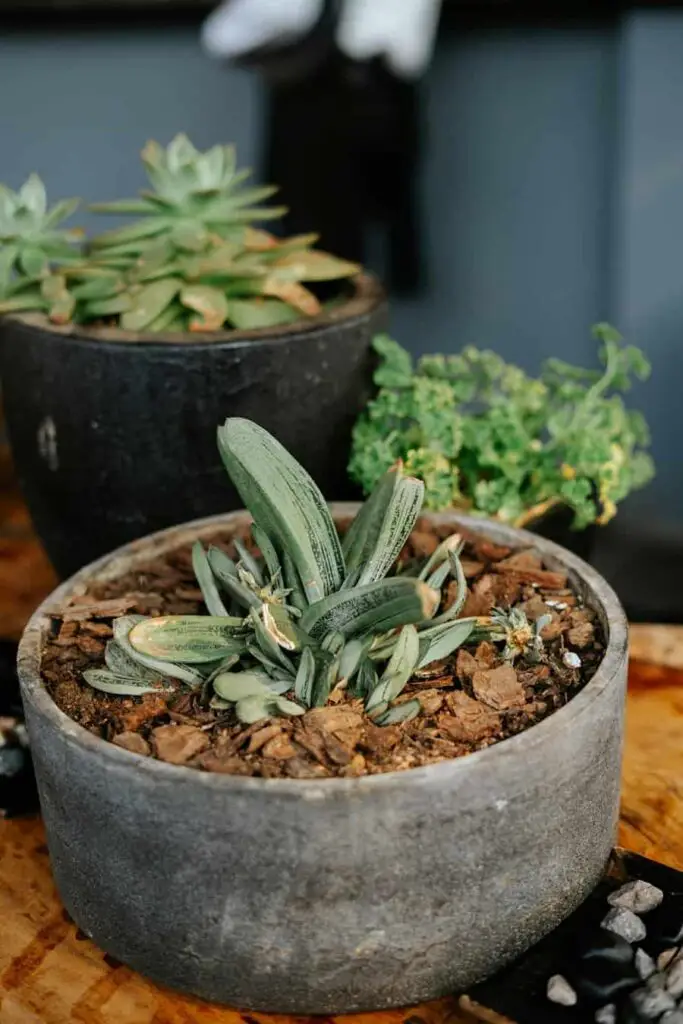
Gasteria is a genus of succulent plants known for their unique beauty and ease of care. Native to South Africa, these plants display fleshy, thick leaves arranged in compact rosettes, with varied patterns including spots and stripes.
Their slow growth and moderate size make them perfect for indoor spaces, where they can thrive with indirect light and moderate watering.
The tubular flowers they produce on slender stalks add extra charm to these plants, which are also easy to propagate from offsets.
3. Sedum morganianum
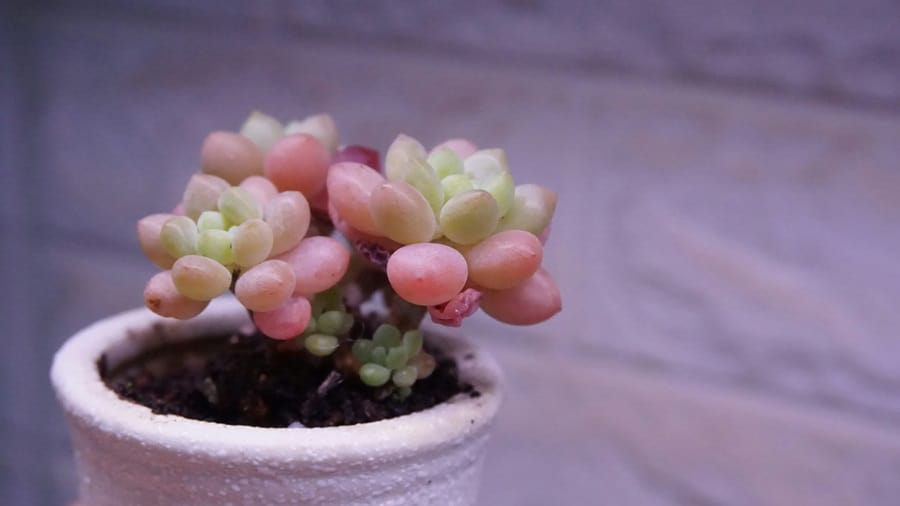
Sedum morganianum, commonly known as “burro’s tail” or “lamb’s tail,” is a popular succulent plant with a trailing appearance and easy care.
Native to Mexico, this species is characterized by its long, trailing stems covered with fleshy, cylindrical leaves resembling small beads.
Its leaves store water, allowing it to withstand periods of drought and contributing to its juicy and lush appearance.
Sedum morganianum is ideal for hanging in hanging baskets, where it can receive bright indirect light.
Furthermore, it is an easy plant to propagate from cuttings, making it a popular choice for both beginner and experienced gardeners.
In summary, Sedum morganianum is a charming and resilient succulent that adds a touch of elegance and freshness to any space with its trailing growth and attractive foliage.
4. Rhipsalis

Rhipsalis is a genus of epiphytic cacti and tropical succulents, distinguished by their trailing appearance and adaptability to low-light environments.
Originating from Central and South America, these plants typically have thin, segmented stems that branch and hang, with small spines or without them. Their leaves are generally tiny and cylindrical.
They are ideal for cultivation indoors, as they can tolerate conditions of indirect light and high humidity. Rhipsalis produces small white or yellow flowers that often transform into bright-colored berries.
This plant is an excellent choice for those looking to add a tropical and low-maintenance aesthetic to their indoor spaces.
5. Gymnocalycium
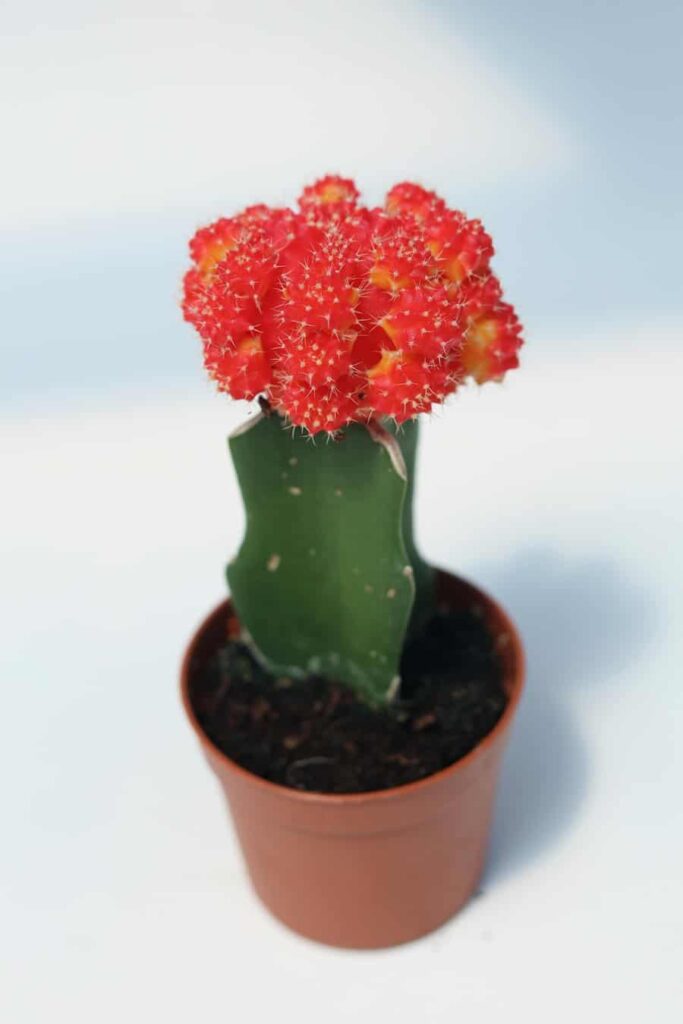
Gymnocalycium is a genus of cactus native to South America, which boasts a diversity of shapes and colors.
These succulent plants have round or cylindrical bodies, with prominent ribs that are often covered in spines.
They are small to medium-sized cacti, making them suitable for pot cultivation. Their flowers are generally funnel-shaped and can come in various colors, from white to pink and red.
Gymnocalycium are valued for their ease of cultivation and their ability to adapt to a variety of conditions, although they generally prefer well-draining soils and moderate sunlight exposure. They are excellent choices for succulent plant enthusiasts.
6. Kalanchoe tomentosa
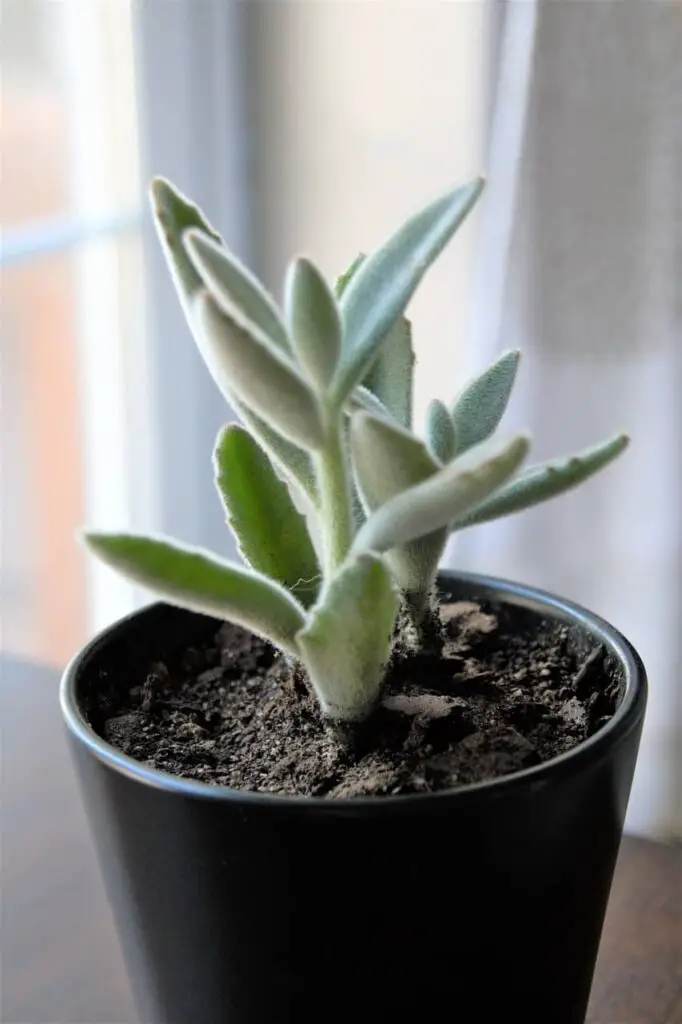
Kalanchoe tomentosa, commonly known as “panda plant,” is a succulent native to Madagascar that is distinguished by its thick leaves covered in a dense layer of silver fuzz, giving it a woolly appearance.
This species has lanceolate and serrated leaves with wavy margins, and it produces small tubular flowers in yellow or orange on long stems.
It is a drought-resistant and easy-to-care-for plant, ideal for both indoor and outdoor settings with warm and sunny climates.
Another characteristic is that it is easy to propagate through cuttings, so you can gift this amazing plant to your friends and family.
7. Opuntia microdasys
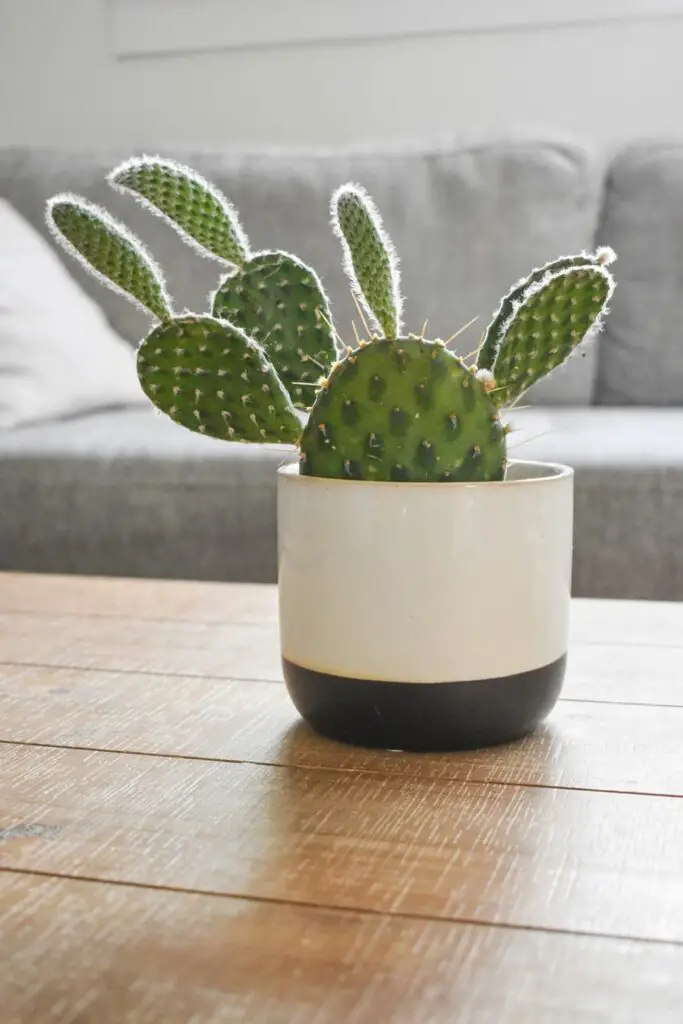
Opuntia microdasys, commonly known as “bunny ears cactus” or “angel’s wings”, is a species of cactus native to Mexico and parts of Central America.
It is characterized by its flattened, oval-shaped cladodes (flattened stem segments, functioning as leaves) which are covered with tiny white spines resembling hairs, giving it a soft and delicate appearance. These spines, called glochids, can cause skin irritation if handled improperly.
During the spring and summer, it produces yellow or orange flowers followed by small, edible prickly pears, which come in red or yellow tones, although its fruits are not as abundant as in other varieties of Opuntia.
It is a resilient and low-maintenance plant, suitable for arid climates and well-drained soils, being popular both as an ornamental plant and for its culinary properties in some cultures.
8. Sempervivum
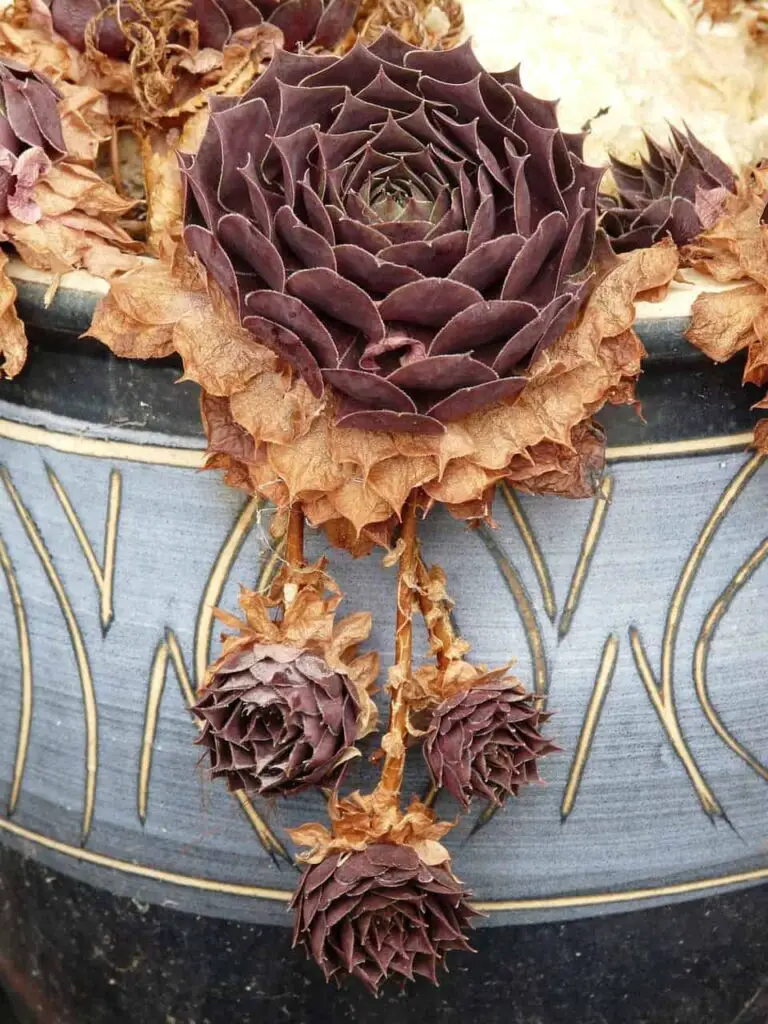
Sempervivum, also known as “houseleek” or “live forever”, is a genus of succulent plants characterized by forming compact and dense rosettes of fleshy, lanceolate leaves, arranged spirally around a short stem.
These plants are native to mountainous regions of Europe, Africa, and Asia, and they are recognized for their resilience to adverse conditions, including drought and poor soils. They typically exhibit a wide range of colors, from green hues to reddish, purples, and silvers.
Additionally, Sempervivum produces small star-shaped flowers at the end of thin stems, adding ornamental interest to the plant.
They are ideal for rock gardens, pots, and xeriscape gardens due to their low maintenance and their ability to propagate easily through offsets.
9. Portulacaria afra
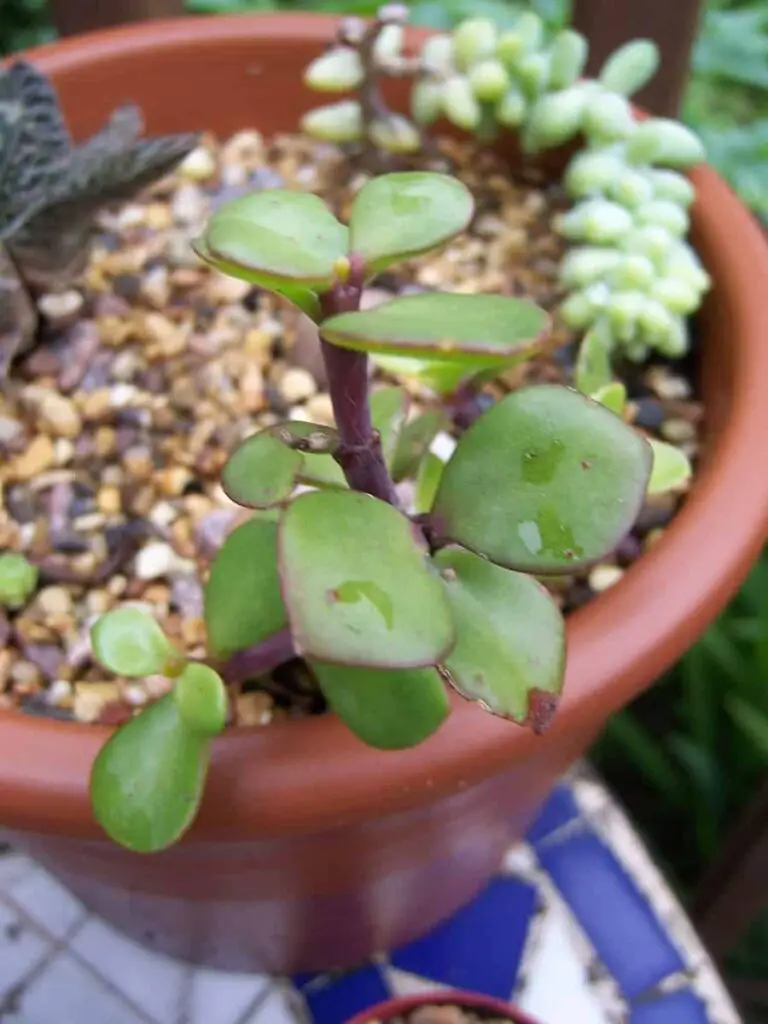
Portulacaria afra, commonly known as “Elephant Plant” or “Jade Bonsai Tree,” is a succulent plant native to South Africa. It stands out for its attractive appearance and its ability to store water in its fleshy leaves, enabling it to withstand periods of drought.
This species comes in two forms: one with low, spreading growth, and the other with vertical growth, resembling a small tree. Its leaves are small, rounded, and succulent, with a bright green color.
It blooms in summer with small white or pink flowers. It is a highly popular plant for both indoor and outdoor settings and is widely used in landscaping and gardening due to its low maintenance and its ability to tolerate various conditions, from full sun to partial shade. Additionally, it is an easily propagated plant through cuttings.
10. Epiphyllum
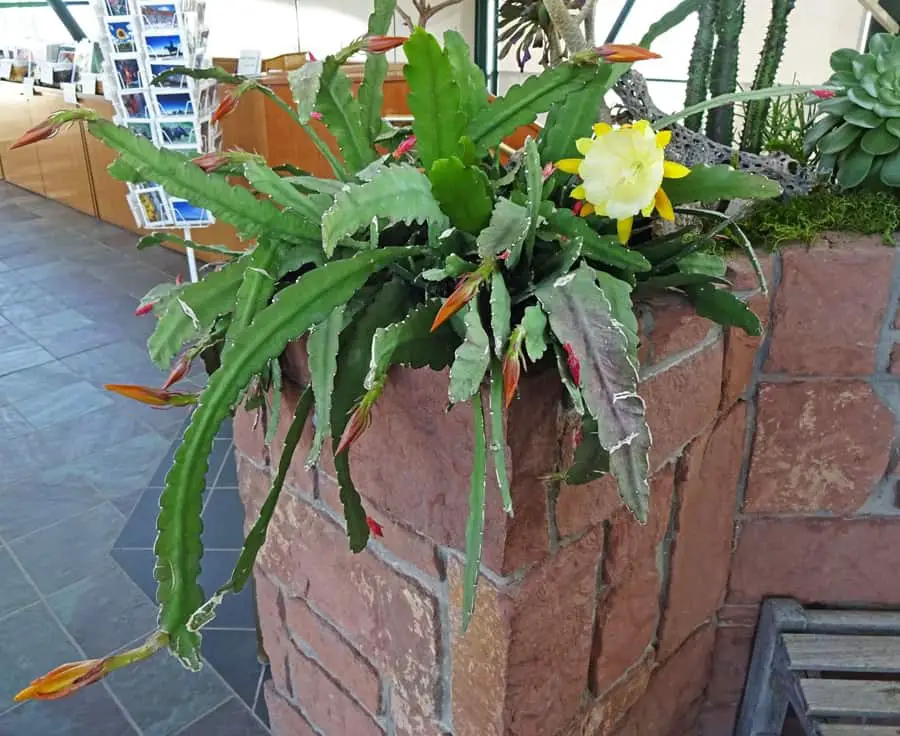
Epiphyllum is a genus of succulent plants native to Central and South America, commonly known as orchid cacti.
They are characterized by their flat stems and modified leaves that serve to store water, as well as their spectacular flowers, which are often large, showy, and come in a wide range of colors.
These flowers typically open at night and emit intense fragrances to attract nocturnal pollinators. Although they are cactus plants, they lack spines, making them popular as indoor plants or in tropical gardens. They are relatively easy to cultivate and can be propagated through stem cuttings.
11. Euphorbia trigona
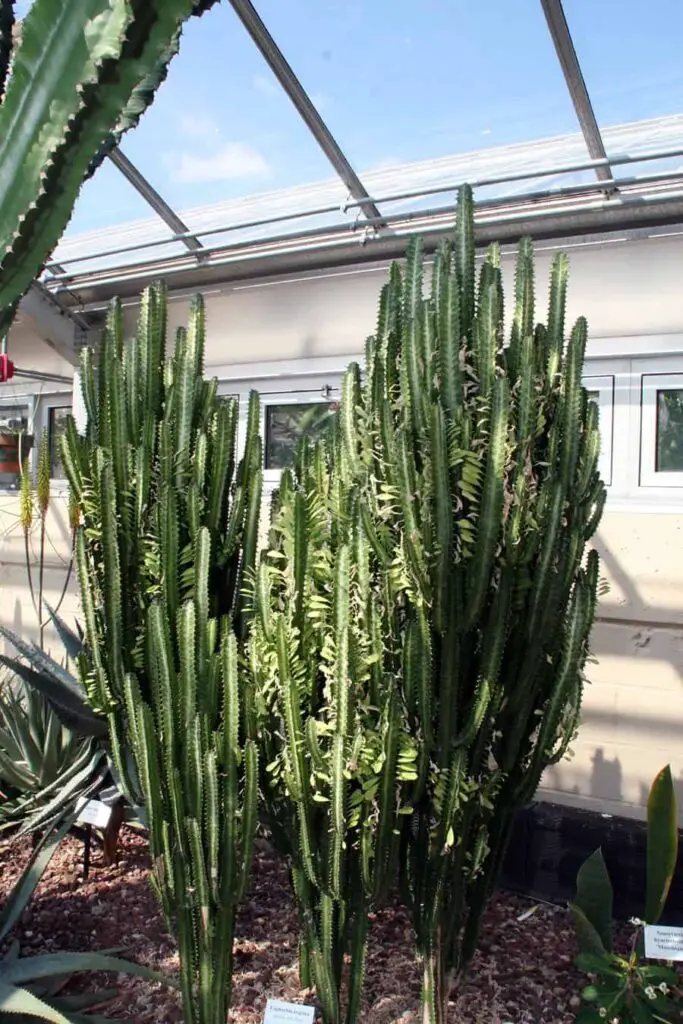
Euphorbia trigona, also known as “African milk tree” or “African candelabra,” is a succulent plant native to tropical Africa.
It is characterized by its erect, columnar stem, which can reach impressive heights of several meters under ideal conditions.
Its stems are green and have sharp edges with spines. Along the edges, small leaves are found that fall early in the plant’s growth. At the top of the stems, the plant can produce small red or yellow flowers in spring.
It is an easy-to-care-for and resilient plant, suitable for bright light conditions and moderate watering.
However, it should be handled with caution due to the milky latex it contains, which can be irritating to the skin and eyes. It is popular as an indoor plant or in warm climate gardens.
Conclusión
Cacti and succulents offer a wide variety of fascinating options to beautify our indoor spaces. Their diversity of shapes, colors, and sizes makes them versatile and attractive decorative elements, perfect for any style of decoration.
In addition to their aesthetic beauty, these plants are easy to care for and require little maintenance, making them ideal companions for those with busy schedules or limited time to dedicate to gardening.
Cacti and succulents are an excellent choice for those seeking indoor plants that require little direct sunlight, thanks to their ability to store water in their leaves and stems, allowing them to survive in lower light conditions.
So, go ahead and have your succulents at home!
